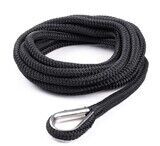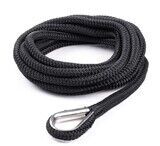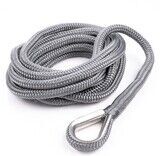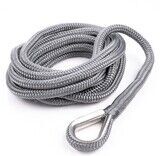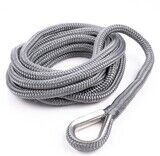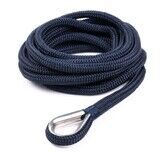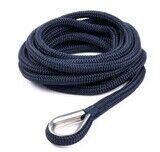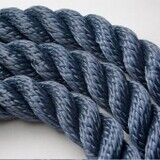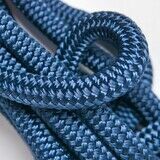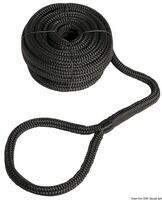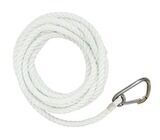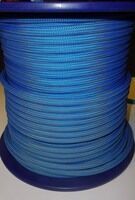In the choice of mooring lines what is important is not to underestimate the role they play. As it is when your boat is at dock, or lies at anchor or tied-up that you really put it at risk!
Massive damage are caused by a gust or a storm hitting boats in a harbour or seashore and not in open sea.
As mooring lines have specific and essential peculiarities, old halyards and sheets are not fit for this task as they may lack in structural elasticity.
Therefore choosing the proper line means to take a protective approach towards the ship in the situation where, statistically, it is more subject to risk.
Choice of materials
The following materials are usually commercially available:
– nylon, a very good elastic material. It support tractions properly but tends to stiffen over time.
– polyester, the best price-performance ratio, less elastic than nylon, the best-selling and used.
– polypropylene, about as strong as polyester, floating but more perishable. Normally used for throw lines.
I suggest a polyester 3-strand line to dock a boat as it is an excellent compromise having good elasticity, which is essential to damp continuous mooring stress, especially in case of undertow.
Line sizing depends on many factors including the length of the boat and its displacement (even though, actually, it is the upper works that lies against and resists the wind like a sail) and the cleat size: yes, because oversizing to guarantee an additional safety margin is ok, but if, in the end, you can’t correctly cleat then yours hasn’t been a good deal!
The table below shows the diameter of the recommended line according to the boat length. However, if an extremely precise estimation is required, then the displacement has to be divided by 4, namely the 4 usual mooring points, 2 at bow and 2 at stern. The obtained value has to be increased by 2.5 times to reach a safety margin that takes into account the load distribution as this is not always equally distributed on the 4 cleats. Now you only have to check the breaking loads given by the manufacturer and the choice is made!
To avoid getting lost in numbers, a simple rule has to be adopted: add 4 to the boat length in meters. As an example: boat length 14 m + 4 = line diameter 18 mm. Check the result by comparing it to the table.
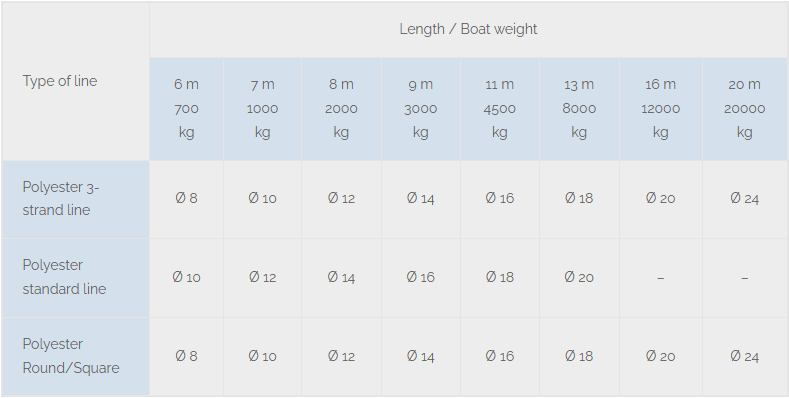
The lining and the kinds of lines to have aboard depend also on the boater’s specific habits.
When the boat is moored with bow or stern at dock, at least 4 lines are needed: given the same diameter, 2 lines having the same length of the boat and 2 twice its length. It has to be taken into account that dock lines are often doubled not just to make unmooring easier but also to reallocate stress and make it more elastic.
The loop knot has to be taken into consideration because of the choice of the diameter mentioned above, as the cleat shall host both loops and, in necessary, even the spring (in case a cleat amidship is not provided).
The same rule applies in case of sideway mooring with 2 extra spring the same length of the boat. If just the 4 lines the boat is provided with are to be used, the same bow cleat line (twice the boat length) will be used both as main line (fastened to the bollard/ring placed at the bow) and as back spring.
SPRING AND RUBBER DAMPERS ARE HIGHLY RECOMMENDED!
